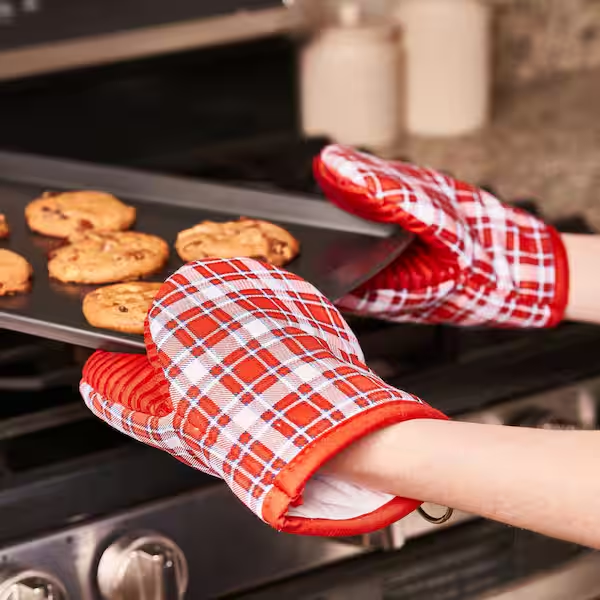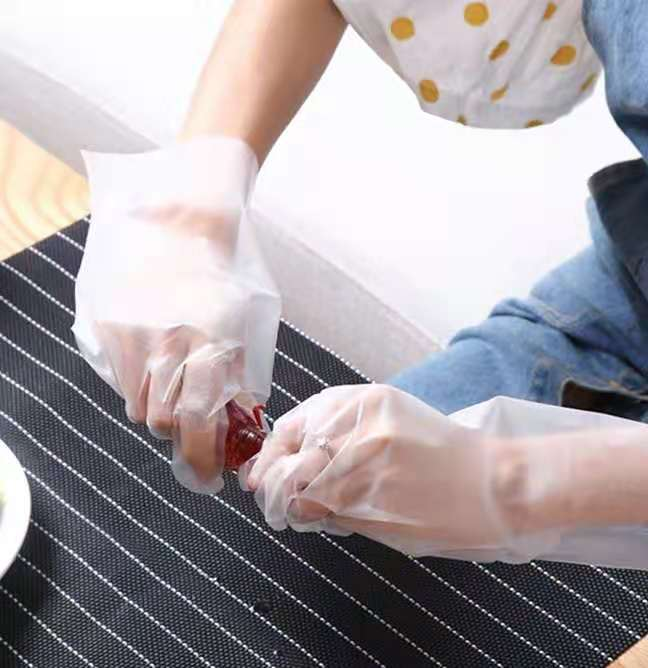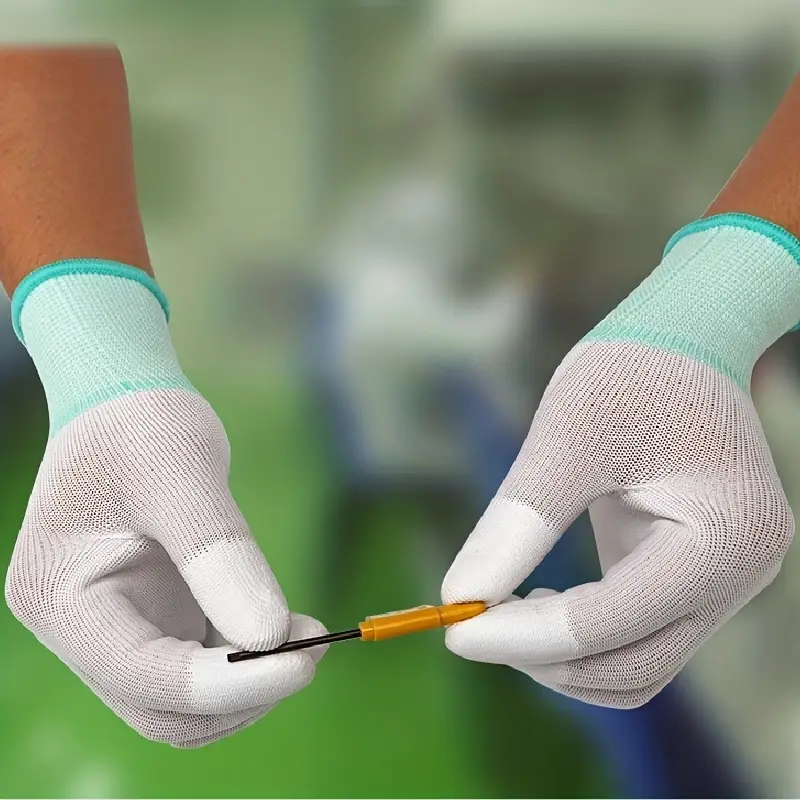During household chores, gloves are commonly worn to protect the hands. Next, we will provide you with a comprehensive introduction to several common types of gloves used in household tasks.

Latex Gloves
Latex gloves are made from natural latex extracted from the bark of Brazilian rubber trees through tapping, and then processed into gloves through a series of treatments. They effectively isolate bacteria, viruses, and chemical substances while maintaining excellent elasticity and flexibility. With a high level of tactile sensitivity, they are often referred to as a “second skin.”
Advantages
- Effectively isolate chemical cleaning agents such as dishwashing liquids, disinfectants, and bleach, preventing chemical penetration that could damage the skin and cause dryness, allergies, or chemical burns.
- Can be used when handling raw meat, fish, chili peppers, garlic, and other pungent ingredients, preventing lingering odors and cross-contamination.
Protect hands from dirt, plant sap, or insect bites, ensuring hygienic safety and preventing direct contact with contaminants.
Disadvantages
- Natural latex contains proteins, which can cause severe allergic reactions in sensitive individuals, including itching, redness, blisters, or even breathing difficulties. Therefore, alternative gloves with similar performance are recommended for those with latex allergies.
- Latex is vulnerable to oils (plant, animal, skincare, essential oils) and strong chemicals (acids, alkalis, solvents, alcohol), which may lead to corrosion, deformation, or melting. Direct contact with such substances is not recommended.
- In high-temperature environments, latex gloves can easily deform, stick together, or melt, making them unsuitable for such use.
- They have relatively low resistance to tearing and puncturing, and can be easily damaged by sharp objects like glass shards, metal wires, or nails.
- Poor breathability leads to stuffiness, sweating, and skin discomfort during prolonged use, potentially causing whitening or eczema.
Uses
Ideal for dishwashing, mopping, window cleaning, bathroom cleaning, garbage handling, food preparation, temporary cleanup, peeling shrimp or scaling fish, laundry, hair dyeing, and light gardening tasks at home.

Oven Gloves
Oven gloves are primarily used when operating ovens, microwaves, air fryers, and baking appliances to protect hands from burns. They are heat-resistant and can withstand high-temperature contact.
Advantages
- In high-temperature environments, they prevent burns from metal or ceramic surfaces, ensuring hand safety and avoiding scalding of palms and wrists.
- Offer full-hand protection against hot steam, preventing steam burns to the back of the hand or wrist.
Disadvantages
- Thicker than other gloves, reducing flexibility and making fine movements more difficult.
- Poor breathability can cause sweating, slippage, and discomfort during extended use.
- In humid conditions, steam conduction through moisture can increase the risk of burns.
- Easily absorbs oil and dirt, making them hard to clean.
- Poor grip may cause slipping; not recommended for wet or greasy environments.
Uses
Suitable for baking, operating air fryers, handling pressure cooker or steamer lids, flipping food on grills, and reheating in microwaves.

Disposable Gloves
As the name suggests, disposable gloves are protective gloves designed for single-use and then discarded. They are primarily used to prevent direct contact with contaminants, liquids, chemicals, bacteria, or grease, thereby protecting hand hygiene and safety.
Advantages
- Prevent unpleasant odors or contamination of other food items, improve hygiene standards, and avoid cross-contamination to protect family health.
- Effectively isolate stains, bacteria, and cleaning agents, preventing skin dryness or allergies caused by exposure to chemicals.
- Prevent contact with soil or plant sap, reducing the risk of harm.
- In emergencies, they can serve as a barrier against infection and provide protective isolation.
Disadvantages
- Thinner than other gloves and prone to tearing when exposed to sharp or rough surfaces. Not suitable for heavy-duty or high-intensity tasks.
- In extreme environments, they can melt at high temperatures or become brittle at low temperatures.
- Loose fit reduces dexterity, making them unsuitable for precision tasks.
- Poor breathability causes sweating and discomfort during extended wear, especially in hot or humid conditions.
- As single-use plastic products, they cannot be reused or biodegraded. Their use contributes to environmental pollution and, if improperly disposed of, can cause serious ecological harm, including white pollution.
Uses
Useful in handling raw meat, fish, seafood, chili peppers; cleaning toilets, kitchens, trash bins; contact with detergents or bleach; hair dyeing, applying conditioner, manicures, applying skincare products or ointments.

PU Gloves
PU (Polyurethane) gloves are made by weaving lightweight fabrics such as cotton, polyester, and nylon, then coating the palm with polyurethane. They are often used in scenarios requiring dexterity, light protection, and good grip. PU gloves are known for their anti-slip, wear-resistant, soft, and breathable qualities, making them practical for light household tasks, electronics assembly, gardening, and woodworking.
Advantages
- Effectively prevent contact with dust and dirt, suitable for prolonged use.
- Soft, form-fitting, and flexible, allowing good operational sensitivity while reducing cuts and abrasions.
- PU coating keeps plant sap off hands and enhances grip for tool use.
- Help prevent slipping and abrasions, protecting palms from scratches.
- The surface is smooth yet grippy, making them ideal for wiping mirrors, glass, and metal surfaces.
Disadvantages
- The PU coating only covers the palm; the back is typically knitted or cotton fabric, which easily absorbs water, making them unsuitable for wet or heavily liquid environments.
- PU material softens or melts under high heat and may emit odors—unsuitable for high-temperature work.
- PU does not resist corrosive chemicals like acids, alkalis, bleach, or paint, which may seep through and cause damage.
- Long-term exposure to sunlight, humidity, or high heat can cause PU to age, harden, or peel. While reusable, the gloves must be well cared for to maintain their lifespan.
Uses
Ideal for window cleaning, dusting, and light household cleaning; assembling furniture, repairing appliances, tightening screws; sorting clothes, carrying boxes, moving small furniture, and seasonal storage tasks.
 Conclusion
Conclusion
There is a wide variety of gloves available for household tasks, but the best one is the one that suits you best. Choosing gloves based on your specific needs will improve both efficiency and protection. The gloves listed above are among the most common for household chores. If you’re interested in them, wish to make a purchase, or want to learn more about household gloves, feel free to contact us — we’re here to assist you anytime!
How to Measure Glove Sizes – Source: AIBON
Latex gloves– Source: AIBON
Safety gloves– Source: AIBON
Working gloves– Source: AIBON


 Conclusion
Conclusion